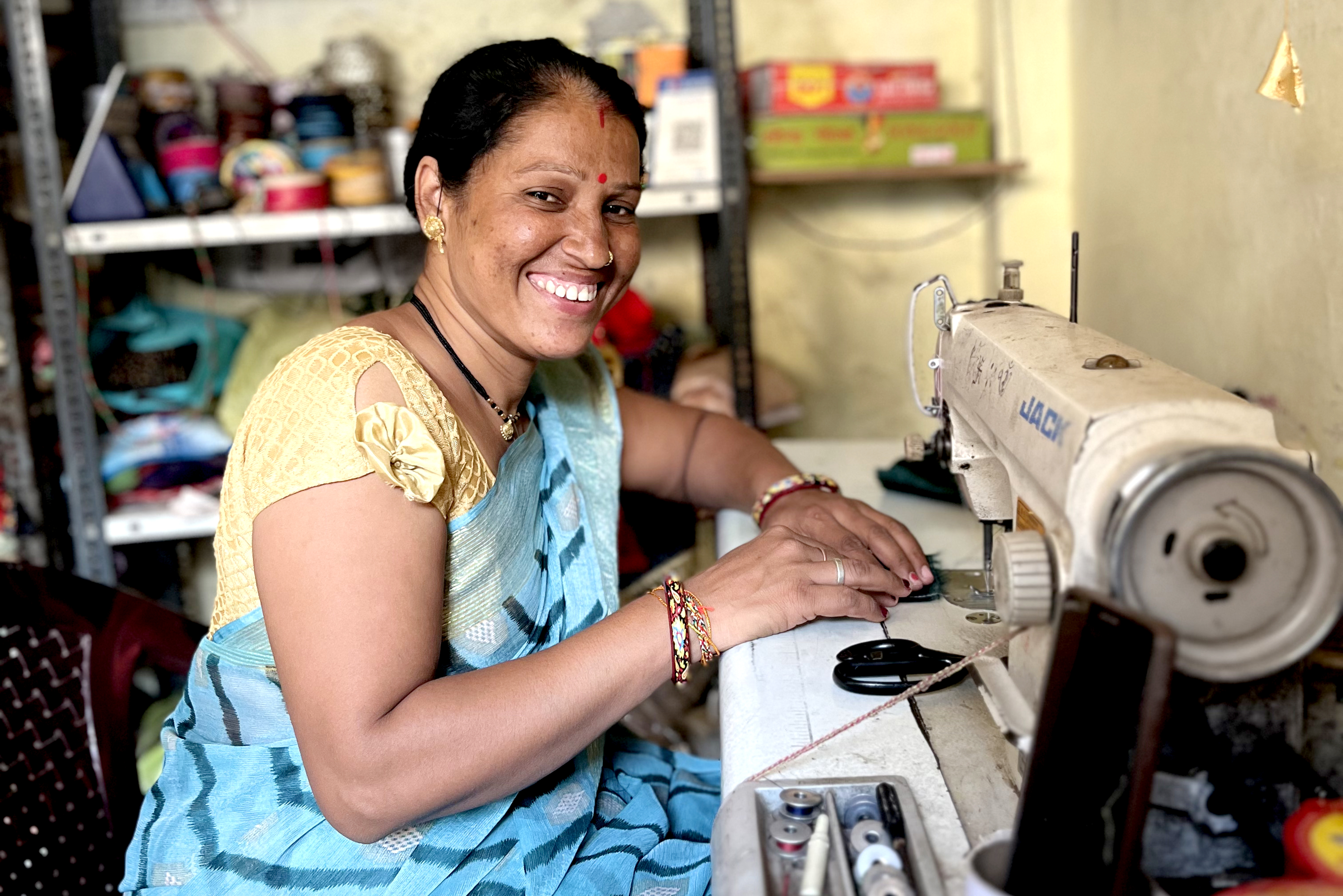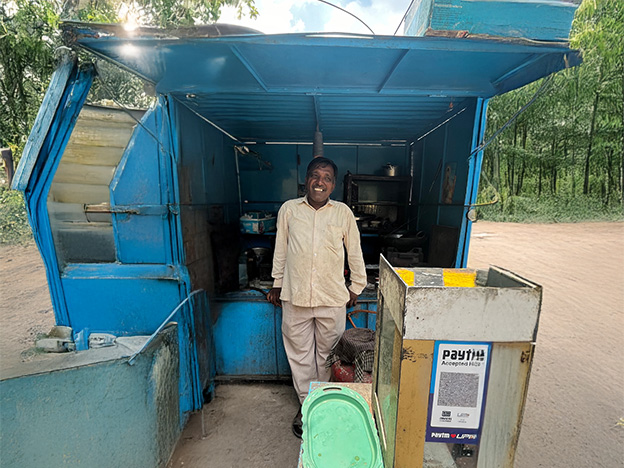Small Businesses, Big Shifts: The Growth Story of India’s Nano Enterprises
Sharon Buteau

In India’s bustling economy, there exists a quiet engine of growth: tiny, often home-based and informal businesses—like a tea stall on the highway, a tuition center in a backyard, or a small bangle store in a bylane. These nano enterprises are part of the vast micro, small and medium enterprise (MSME) sector, powering local economies and livelihoods for millions. Yet, for many of these businesses, one thing stands between stagnation and scale: access to credit, with an estimated $25 billion untapped credit market.
Moreover, how does access to credit shape the trajectories of these businesses and their households? What helps them accelerate growth and transition from subsistence to scale? LEAD at Krea University, in partnership with the Michael & Susan Dell Foundation, recently concluded a three-year study that followed the journeys of 1,800 such entrepreneurs across seven Indian states. We tracked these businesses from the time they received loans (ticket sizes ₹40,000 to ₹4 lakhs) from Non-Banking Financial Companies (NBFCs), to the end of their loan tenure.
The results tell a powerful story: credit isn’t just about money—it’s a catalyst for growth, resilience, and a stepping stone for formalization.
Credit Fuels Growth, But Not Equally
We see that, on average, enterprises reported a 25% increase in turnover and a 27% rise in profits over two years. These gains were even more pronounced in the trade and manufacturing sectors. But growth depended on how the money was used, who the entrepreneur was, and what support systems they had. Entrepreneurs who invested in inventory, equipment, and operational efficiency saw the most gains.
For instance, Mahesh, an optician from Chennai, used a ₹2.25 lakh loan to stock better frames and hire staff. His profits rose 83%, and he doubled his household income. Others, like Ragini, made a strategic decision to move her highway canteen to a location in the city. While she saw her turnover soar as a result—but rising operational costs revealed that scaling up isn’t always smooth or linear.
Graduation: The Stepping Stones of Progress
A key insight was around graduation—how businesses operating at different turnover levels moved a subsistence set up to more stable, thriving enterprises. The study classified businesses into three groups:
- Livelihood enterprises (turnover < ₹3 lakh)
- Transitioning enterprises (₹3–10 lakh)
- Nano enterprises (₹10 lakh – ₹1 crore)
About one-third of the enterprises graduated to a higher turnover segment during the study. What sets them apart? Larger loans, smart reinvestments, formal registration, digital adoption, and often, a better-educated and more confident entrepreneur.
For instance, Ram, a mechanic from Madhya Pradesh, used his loan to build a workshop and buy new tools. His turnover increased nearly 200%, and he finally replaced his leaky thatched roof with a solid pucca one. Growth at work translated directly into better living conditions.
Spillover to Households: More Than Just Business
The impact of credit went beyond the shop floor. Across the board, household incomes rose by 11%, translating into more stability, and higher spending on children’s education and insurance.
For women entrepreneurs, especially, credit was transformative. Despite getting smaller loans and facing gendered barriers, they achieved meaningful improvements in household income and savings.
Shabana, a bangle seller in Prayagraj, expanded her home business into a proper store and more than doubled her household income, becoming the family’s sole breadwinner after her husband’s accident.
The Invisible Boost: Formalization and Digitization
Formalization was another powerful by-product of credit. Businesses that started informally began registering themselves, adopting digital payments, and keeping better records. Between baseline and endline, the proportion of enterprises with some form of official registration rose sharply from 37.6% to 52.8%, with Udyam registration being a common entry point for formalization. Digital payment adoption grew from 50% to 67%—especially among businesses dealing directly with customers.
Bharat, a tea seller, had his roadside stall demolished once. With his loan, he rebuilt a more permanent space and got a food license, securing his business against future disruptions.
What Makes Growth Stick?
The study found that growth wasn’t random. Entrepreneurs who scaled successfully often had:
- Access to larger loans (₹1–4 lakhs)
- Higher education levels
- Greater control over financial decisions
- Better bookkeeping and registration practices
- Digital readiness
- Support from family or community
These entrepreneurs also showed a willingness to take risks—investing in storefronts, hiring employees, or upgrading infrastructure.
But growth also came with tradeoffs. As businesses expanded, so did expenses. Not every investment yielded immediate returns. Some saw profits flatten temporarily, even as turnover rose—underscoring the need for patient capital and targeted support.
Making Credit Work Better
The study offers clear lessons for policymakers, lenders, and ecosystem actors:
- Design smarter credit products
Offer larger, structured loans (₹2–4 lakh) with flexible terms, grace periods, and repayment linked to business cycles. - Target underserved segments
Women, low-income households, and new-to-credit borrowers need tailored support, including financial literacy, business mentoring, and sector-specific loan structures. - Rethink credit scoring
Move beyond past income to assess potential—look at business models, innovation, digital adoption, and efficiency. - Link formalization incentives to credit
Offer perks—like faster disbursement or lower interest—for businesses that register and adopt digital tools. - Track impact over time
Establish systems to monitor how loans affect not just businesses, but entire households.
Findings from the study make one thing clear: when growth-oriented entrepreneurs can access the right kind of credit products, even the smallest enterprises can leap forward—taking their families and communities along with them. But the impact of access to credit is also multifaceted— shaped by enterprise size, sector, loan utilization, owner profiles, and household dynamics. It must be matched with thoughtful design, trust in underserved borrowers, and a deep understanding of how real businesses innovate and operate on the ground.
Author: Sharon Buteau, Executive Director, LEAD at Krea University.
Special thanks to the nano entrepreneurs for their time, patience, and contributions to this story.
Published on the occasion of MSME Day, this piece offers a preview of key learnings from a three-year study on nano enterprises. The full report will be released soon.
Explore the baseline report and revisit last year’s feature on credit for nano entrepreneurs.
Image credits: Vatsima Tripathi
*Names of study participants have been changed to protect their identity.

